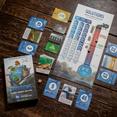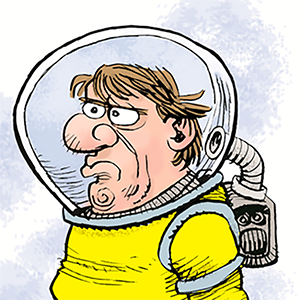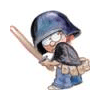What can board games teach students about climate change?
Published in Science & Technology News
Among the world’s ever-expanding array of board games, a small but growing number deal with climate change. But are these games any good?
As a professor of English who specializes in environmental literature, I set out to learn how well these board games portray the perils that global warming poses to the planet. Are they an effective way for students to learn some of the science and stark realities behind the persistent heating of Earth?
I invited half a dozen climate activists and educators to try the games out to answer these questions and more. My thought was that if people learn best while they are active and joyful participants, then turning a serious topic like climate change into a board game might have value beyond the game.
Most board games – think of Monopoly or Catan – are zero-sum competitions: One player wins a clear victory over the others. But since climate change affects the whole world, climate change board games emphasize teamwork and group success. Either all players win together, or no one survives. These board games have a narrative arc that can spark discussion about values, perspective, conflict, emotions and decision-making.
And those are precisely the kinds of discussions my colleagues and I had while sharing pizza and salad over the course of the evening. Together, we evaluated the games for their ease to learn, their value for teaching about climate catastrophe, their ability to spark conversation and their suitability for high school and university students.
What follows is an account of the five climate change board games that we all tried.
Solutions draws upon scientific solutions researched by Project Drawdown, which is a nonprofit that pushes for solutions to climate change. The game, played in rounds, requires players to draw two cards that each carefully describe a way to reduce global emissions.
Players discuss the two options and rank which one is better for the climate. Correct decisions reduce global temperatures, while incorrect guesses damage the planet. Players also roll the dice to determine further actions that could potentially make global temperatures rise.
We all agreed the game could be a valuable learning tool since it was easy to learn and based on accurate scientific information. The need to evaluate different solutions easily sparked conversation, and the information was suitable for upper-level high school students and university students.
Another game that we ranked highly is Kyoto, which has players simulate a high-stakes climate negotiation summit. We each represented a country, and the cards we drew determined our secret national interests. To win the game, we had to bargain with each other, pay fees, bribe and try to persuade each other to reach climate goals.
Initially, I doubted the educational value of the game because, due to the draw of the cards, players who represented the U.S. could only win the game if they increased global carbon emissions, as determined by the coal-industry-friendly cards. Who wants a game where players try to raise global temperatures?
But through discussion, we all realized that the game provides insight into possible barriers to achieving emissions goals, and how nations have to juggle meeting emission-reduction goals with their own economic self-interests. While the game takes more time to learn than Solutions, we decided it could still be very useful for students.
We tried playing a free downloadable and printable version of Carbon City Zero, but it proved too time-consuming to learn the rules. After 45 minutes of struggling with the cards to figure out how to play, we gave up and moved on.
Family Pastimes, the company that makes Somewhere Everywhere Water Rising, is known for developing only collaborative games, and we have purchased many children’s games from them in the past. In Somewhere Everywhere Water Rising, players take on the role of consultants who have to make collective decisions about developing land projects in the face of sea-level rise.
We liked the discussion it sparked, but ultimately concurred that the game specifically focuses on devastating sea-level rise, rather than systemic climate change that causes such rising levels in the first place. The game is easy to learn and relies on conversation, but we felt it had a lower educational value because it does not teach about the human activity that creates and perpetuates increasing global temperatures. The game might be more suitable as an extra credit activity, rather than the focus of a classroom lesson.
Finally, we played Nunami, a lovely game created by an Inuit family from Ivujivik, Canada, with instructions in Inuktitut, English and French.
The game aims to teach players about balancing life in fragile terrain. There are cards for humans, animals, sand and snow. Although we deeply appreciated how the game strives to sensitize players to Inuit life on the tundra so that they can see what is threatened by climate catastrophe, it does not teach about the drivers of climate change and thus was not suitable for our specific classroom needs.
By 10 p.m., we had conquered the pizza, energetically played five different board or card games, and had a lot of fun discussing critical issues and meeting new people.
To our group, the clear “winner” is the board game Solutions because it encourages collaborating to make decisions with fact-based science. The setup of the game allows for interesting team-building conversations.
As I incorporate games into my courses on climate-change literature and first-year writing, students play Solutions and complete a writing assignment based on their various decisions during the game.
At our next climate change board game evening, my group of educators and activists plans to play Tipping Point, Daybreak, Carboniq and Climate Call.
Anyone want to join us? We’ll deal you in.
This article is republished from The Conversation, an independent nonprofit news site dedicated to sharing ideas from academic experts. Like this article? Subscribe to our weekly newsletter.
Read more:
30 years ago global warming became front-page news – and both Republicans and Democrats took it seriously
How have textbooks portrayed climate change?
Debra J. Rosenthal does not work for, consult, own shares in or receive funding from any company or organization that would benefit from this article, and has disclosed no relevant affiliations beyond their academic appointment.

















Comments